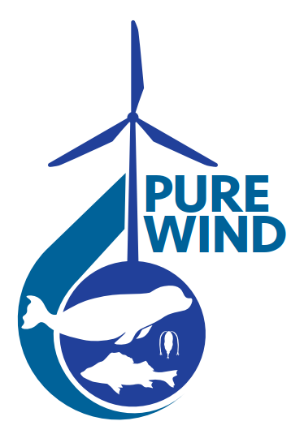
A total capacity of 27 gigawatts (GW) of fixed offshore wind is operational globally, with a further 275 GW anticipated by 2050. Sounds from the development of offshore wind farms (OWF) are a contributor of anthropogenic noise to the marine environment. The offshore wind industry, regulators, and researchers around the world have expended substantial effort to better understand and mitigate the impacts of underwater noise from OWF construction activities, but our understanding of impacts from OWF operations on marine ecosystems is still limited.
Underwater noise generated by offshore wind turbines during their operation is mainly caused by vibration from the movement of the mechanical parts in the nacelle, vibration induced by wind on the turbine tower, or by vibration from a floating turbine’s anchoring systems. Only a few studies have measured and characterized the operational noise from fixed and floating OWF so far (e.g., Stöber and Thomsen 2021, Burns et al. 2022, Risch et al. 2023), let alone the potential environmental effects.
Launched in 2022, the PURE WIND project aims to improve our understanding of underwater noise from operational OWF and how this noise impacts marine life. In addition, it aims to provide policy-relevant tools for regulation and mitigation of those impacts. The project runs until 2025 and is being coordinated by the Norwegian University of Science and Technology (NTNU), along with 11 partners from Belgium, Germany, Ireland, Italy, Norway, Poland, and Spain.
In cooperation with local stakeholders, the PURE WIND project will use fixed stations and an autonomous vehicle to take sound source level measurements of both fixed and floating offshore wind turbines in the North Sea, Ligurian Sea, Norwegian Sea, and Atlantic Ocean off the Canary Islands. The project will then use these data to develop a comprehensive numerical model encompassing all aspects of OWF noise production and propagation to support future OWF spatial planning and environmental impact assessments.
From a biological perspective, PURE WIND’s goals are to identify spatial and qualitative use of operating OWF by top predators and study the impacts of OWF noise on fish and zooplankton behaviour. Ultimately, these efforts will advance our knowledge of acute and cumulative effects of operational OWF noise across pelagic food webs. Work has been underway to deploy tags on harbour and grey seals in the German North Sea to track their movement across the area and interactions with the existing wind farms. New tag deployments under the PURE WIND project are being combined with historic tag data collection to allow for a more extensive view of seals’ use of the areas around OWFs. At the same time, passive acoustic recording is underway to collect information on harbour porpoise foraging behaviour within the Belgian North Sea. These data will be used to develop models that will enhance our understanding of how harbour porpoises interact with their environment during foraging. Finally, the project will test the effects of OWF noise exposure on the distribution of zooplankton, which are a critical component of the marine food web. PURE WIND researchers designed a mesocosm experiment during which they monitored the response of the plankton community to the sounds emanating from an operational OWF. This experiment was conducted in summer 2024 in Norway.
After three decades of experience with fixed OWF installation and operation, many countries have developed mature, efficient, and largely effective planning, licensing, and permitting processes that cover all stages of the development lifecycle. Robust monitoring and mitigation strategies have also evolved to limit negative environmental consequences, including those resulting from underwater noise. The collection of scientific studies and reports, governance models, statutory provisions and associated standards, and guidance represent a valuable store of knowledge and information that can be adapted for use in other areas and jurisdictions where OWF is planned or under development.
To that end, the PURE WIND project will also synthesize the knowledge and best practices available from international OWF development to define case studies best suited to transfer existing and newly created knowledge into the development of policy, mitigation, and regulation for fixed and floating OWF within national, European Union, and international frameworks. As part of this effort, the PURE WIND project has created a Regulatory Frameworks for Offshore Wind Energy and Underwater Noise in Europe page on Tethys that provides an overview of country-specific legislation for the consenting and management of environmental impacts (in particular underwater sound) of OWF for those countries involved in the PURE WIND project, along with any common European Union directives. With the expected substantial expansion in OWF infrastructure globally as part of the green shift, it is the goal of the PURE WIND project that the data and approaches produced from PURE WIND will help facilitate this transition while minimizing impacts on the marine ecosystems.
